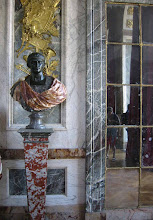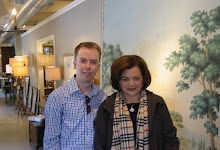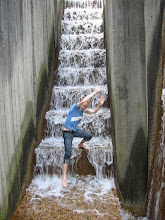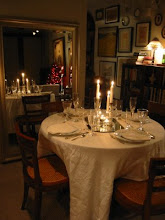 Located in Coral Gables, a historic neighborhood within Miami, the Biltmore Hotel has become a famous luxury hotel after years of neglect.
Located in Coral Gables, a historic neighborhood within Miami, the Biltmore Hotel has become a famous luxury hotel after years of neglect.
When the hotel was opened in January 1926 by George Merrick, the original developer of Coral Gables, it was to combine a luxury hotel with world class outdoor amenities such as a golf course and swimming pools and become the headquarters for Miami society.  Schultze and Weaver, the architects of other hotels in the Biltmore chain (as well as New York's Grand Central Terminal and Miami's Freedom Tower), designed the hotel to have the most modern of conveniences while fitting in with Merrick's playful Mediterranean Beaux Arts style.
Schultze and Weaver, the architects of other hotels in the Biltmore chain (as well as New York's Grand Central Terminal and Miami's Freedom Tower), designed the hotel to have the most modern of conveniences while fitting in with Merrick's playful Mediterranean Beaux Arts style. Breaking records, the building was for a number of years the tallest structure in Florida and had the largest swimming pool in the world.
Breaking records, the building was for a number of years the tallest structure in Florida and had the largest swimming pool in the world.
 In fact, the pool was more famous than the hotel! Synchronized swimming was a big draw in the 20s and 30s and afterwards the guests would stay to dances in one of the many ballrooms.
In fact, the pool was more famous than the hotel! Synchronized swimming was a big draw in the 20s and 30s and afterwards the guests would stay to dances in one of the many ballrooms. The actor Johnny Weissmuller was actually 'discovered' while a swim coach and performer here at the Biltmore.
The actor Johnny Weissmuller was actually 'discovered' while a swim coach and performer here at the Biltmore.
 The hotel was converted into the Army Air Forces Regional Hospital in 1942 and remained a hospital through the nearby University of Miami's School of Medicine until 1968.
The hotel was converted into the Army Air Forces Regional Hospital in 1942 and remained a hospital through the nearby University of Miami's School of Medicine until 1968. The windows were sealed shut and the marble floors covered with cheap linoleum, converting the lovely hotel into what was probably a very awkward, but elegant hospital.
The windows were sealed shut and the marble floors covered with cheap linoleum, converting the lovely hotel into what was probably a very awkward, but elegant hospital.  The Biltmore sat empty from 1968 until 1983 when it was restored and converted back into a luxury hotel again, opening in 1987.
The Biltmore sat empty from 1968 until 1983 when it was restored and converted back into a luxury hotel again, opening in 1987. However, the bright side in this hospital conversion and abandonment was that the building was never modernized, saving many of the lovely old features and details.
However, the bright side in this hospital conversion and abandonment was that the building was never modernized, saving many of the lovely old features and details.
 Schultze and Weaver, the architects of other hotels in the Biltmore chain (as well as New York's Grand Central Terminal and Miami's Freedom Tower), designed the hotel to have the most modern of conveniences while fitting in with Merrick's playful Mediterranean Beaux Arts style.
Schultze and Weaver, the architects of other hotels in the Biltmore chain (as well as New York's Grand Central Terminal and Miami's Freedom Tower), designed the hotel to have the most modern of conveniences while fitting in with Merrick's playful Mediterranean Beaux Arts style. Breaking records, the building was for a number of years the tallest structure in Florida and had the largest swimming pool in the world.
Breaking records, the building was for a number of years the tallest structure in Florida and had the largest swimming pool in the world. In fact, the pool was more famous than the hotel! Synchronized swimming was a big draw in the 20s and 30s and afterwards the guests would stay to dances in one of the many ballrooms.
In fact, the pool was more famous than the hotel! Synchronized swimming was a big draw in the 20s and 30s and afterwards the guests would stay to dances in one of the many ballrooms. The actor Johnny Weissmuller was actually 'discovered' while a swim coach and performer here at the Biltmore.
The actor Johnny Weissmuller was actually 'discovered' while a swim coach and performer here at the Biltmore. The hotel was converted into the Army Air Forces Regional Hospital in 1942 and remained a hospital through the nearby University of Miami's School of Medicine until 1968.
The hotel was converted into the Army Air Forces Regional Hospital in 1942 and remained a hospital through the nearby University of Miami's School of Medicine until 1968. The windows were sealed shut and the marble floors covered with cheap linoleum, converting the lovely hotel into what was probably a very awkward, but elegant hospital.
The windows were sealed shut and the marble floors covered with cheap linoleum, converting the lovely hotel into what was probably a very awkward, but elegant hospital.  The Biltmore sat empty from 1968 until 1983 when it was restored and converted back into a luxury hotel again, opening in 1987.
The Biltmore sat empty from 1968 until 1983 when it was restored and converted back into a luxury hotel again, opening in 1987. However, the bright side in this hospital conversion and abandonment was that the building was never modernized, saving many of the lovely old features and details.
However, the bright side in this hospital conversion and abandonment was that the building was never modernized, saving many of the lovely old features and details.
The small structure behind the main hotel block was probably my favorite part; the very beaux-arts rational plan centered on an open courtyard, seen in the photos above. It reminds me so much of the Pan American Building by Paul Cret because of the open courtyard with dual processional staircases up to a grand ballroom that I wonder if it was a precedent to the architects?
It reminds me so much of the Pan American Building by Paul Cret because of the open courtyard with dual processional staircases up to a grand ballroom that I wonder if it was a precedent to the architects? Stepping inside the enormous lobby, you're immediately confronted with 2 blanking birdcages, seen above. Such a nice lively touch I think! Have you ever seen an 8' tall birdcage like that before? I love the travertine floors, much prettier than the linoleum that covered them for 50 years!
Stepping inside the enormous lobby, you're immediately confronted with 2 blanking birdcages, seen above. Such a nice lively touch I think! Have you ever seen an 8' tall birdcage like that before? I love the travertine floors, much prettier than the linoleum that covered them for 50 years! This little staircase in the corner of the lobby was probably my favorite feature -is that a Gremlin? haha I loved the blue painted spanish terracotta tiles and the wall finish is amazing.
This little staircase in the corner of the lobby was probably my favorite feature -is that a Gremlin? haha I loved the blue painted spanish terracotta tiles and the wall finish is amazing.
 It reminds me so much of the Pan American Building by Paul Cret because of the open courtyard with dual processional staircases up to a grand ballroom that I wonder if it was a precedent to the architects?
It reminds me so much of the Pan American Building by Paul Cret because of the open courtyard with dual processional staircases up to a grand ballroom that I wonder if it was a precedent to the architects? Stepping inside the enormous lobby, you're immediately confronted with 2 blanking birdcages, seen above. Such a nice lively touch I think! Have you ever seen an 8' tall birdcage like that before? I love the travertine floors, much prettier than the linoleum that covered them for 50 years!
Stepping inside the enormous lobby, you're immediately confronted with 2 blanking birdcages, seen above. Such a nice lively touch I think! Have you ever seen an 8' tall birdcage like that before? I love the travertine floors, much prettier than the linoleum that covered them for 50 years! This little staircase in the corner of the lobby was probably my favorite feature -is that a Gremlin? haha I loved the blue painted spanish terracotta tiles and the wall finish is amazing.
This little staircase in the corner of the lobby was probably my favorite feature -is that a Gremlin? haha I loved the blue painted spanish terracotta tiles and the wall finish is amazing.
High tea is offered in the opposite corner of the lobby and I'm sure it's becoming a tradition with mothers and daughters from all over Miami!

An Arabian Nights fantasy of a groin-vaulted ceiling fills both sides of the lobby, split in half by a more Spanish styled polychromed wood ceiling, seen below. A display case holding memorabilia from the heyday of the hotel, such as china, programs and hotel silver sits next to the front door.
A display case holding memorabilia from the heyday of the hotel, such as china, programs and hotel silver sits next to the front door. My favorite of the ballrooms is located directly off the lobby and features this amazing fireplace, big enough to walk into and polychromed wood ceilings.
My favorite of the ballrooms is located directly off the lobby and features this amazing fireplace, big enough to walk into and polychromed wood ceilings. I'm not sure if these chandeliers are original, but they fit in nicely.
I'm not sure if these chandeliers are original, but they fit in nicely. I just can't get enough of these ceilings!
I just can't get enough of these ceilings! Behind the lobby and adjacent to this ballroom is the Cortile Loggia, which surrounds the outdoor Fontana restaurant below.
Behind the lobby and adjacent to this ballroom is the Cortile Loggia, which surrounds the outdoor Fontana restaurant below.
 This feels incredibly Spanish to me with the tilework and colorful stuccowork.
This feels incredibly Spanish to me with the tilework and colorful stuccowork. I love seeing the patina on the old mouldings, wood window frames and stucco.
I love seeing the patina on the old mouldings, wood window frames and stucco. The courtyard is filled with palms and in the winter Miami weather is really the perfect place to enjoy a meal.
The courtyard is filled with palms and in the winter Miami weather is really the perfect place to enjoy a meal.  I loved the light fixtures on the lower level with the star shaped rosettes.
I loved the light fixtures on the lower level with the star shaped rosettes.

 A display case holding memorabilia from the heyday of the hotel, such as china, programs and hotel silver sits next to the front door.
A display case holding memorabilia from the heyday of the hotel, such as china, programs and hotel silver sits next to the front door. My favorite of the ballrooms is located directly off the lobby and features this amazing fireplace, big enough to walk into and polychromed wood ceilings.
My favorite of the ballrooms is located directly off the lobby and features this amazing fireplace, big enough to walk into and polychromed wood ceilings. I'm not sure if these chandeliers are original, but they fit in nicely.
I'm not sure if these chandeliers are original, but they fit in nicely. I just can't get enough of these ceilings!
I just can't get enough of these ceilings! Behind the lobby and adjacent to this ballroom is the Cortile Loggia, which surrounds the outdoor Fontana restaurant below.
Behind the lobby and adjacent to this ballroom is the Cortile Loggia, which surrounds the outdoor Fontana restaurant below. This feels incredibly Spanish to me with the tilework and colorful stuccowork.
This feels incredibly Spanish to me with the tilework and colorful stuccowork. I love seeing the patina on the old mouldings, wood window frames and stucco.
I love seeing the patina on the old mouldings, wood window frames and stucco. The courtyard is filled with palms and in the winter Miami weather is really the perfect place to enjoy a meal.
The courtyard is filled with palms and in the winter Miami weather is really the perfect place to enjoy a meal.  I loved the light fixtures on the lower level with the star shaped rosettes.
I loved the light fixtures on the lower level with the star shaped rosettes.
The courtyard is open ended and looks off into the well manicured golf course beyond a tiled terrace. These must be the best rooms with the balconies overlooking the golfcourse.
These must be the best rooms with the balconies overlooking the golfcourse. I hope you enjoyed this visit to the Biltmore with me! While we didn't stay at the Biltmore (staying instead at the Soho Beach House on nearby Miami Beach, read about that fabulous hotel on Heather's blog HERE) I think my next trip to Miami may include a night or two here.
I hope you enjoyed this visit to the Biltmore with me! While we didn't stay at the Biltmore (staying instead at the Soho Beach House on nearby Miami Beach, read about that fabulous hotel on Heather's blog HERE) I think my next trip to Miami may include a night or two here.
 These must be the best rooms with the balconies overlooking the golfcourse.
These must be the best rooms with the balconies overlooking the golfcourse. I hope you enjoyed this visit to the Biltmore with me! While we didn't stay at the Biltmore (staying instead at the Soho Beach House on nearby Miami Beach, read about that fabulous hotel on Heather's blog HERE) I think my next trip to Miami may include a night or two here.
I hope you enjoyed this visit to the Biltmore with me! While we didn't stay at the Biltmore (staying instead at the Soho Beach House on nearby Miami Beach, read about that fabulous hotel on Heather's blog HERE) I think my next trip to Miami may include a night or two here.
Read more on the history of the hotel and see period photos HERE.
 I'm back from a fun filled weekend spent in New York with the highlight being a visit to my favorite museum,
I'm back from a fun filled weekend spent in New York with the highlight being a visit to my favorite museum, 
 My favorite has always been the moody Venetian bedroom, seen in the top 2 photos.
My favorite has always been the moody Venetian bedroom, seen in the top 2 photos.
 The details of these rooms are just amazing, no matter which period.
The details of these rooms are just amazing, no matter which period. The lighting is spectacular; Different details are highlighted, moods created and scenes come to life in dappled sunlight.
The lighting is spectacular; Different details are highlighted, moods created and scenes come to life in dappled sunlight. You can get up close and personal with items from history, who can ask for more?
You can get up close and personal with items from history, who can ask for more? Room after room -it's an entire day spent admiring the architecture and design of the past.
Room after room -it's an entire day spent admiring the architecture and design of the past. After being indoors all day a quick trip through Central Park, seen below, and lunch in my favorite nearby restaurant,
After being indoors all day a quick trip through Central Park, seen below, and lunch in my favorite nearby restaurant, 










































.JPG)







































































